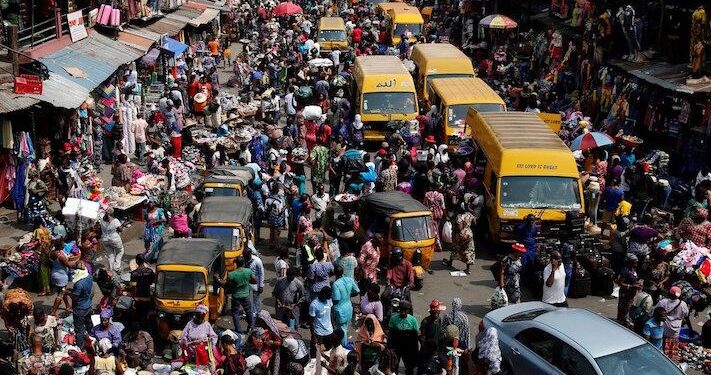Nigeria Losing Battle Against Hunger as Food Inflation Persists
Three years ago, Jelili Adewale, a father of three living in Lagos, needed N100,000 every month to feed his family. Today, he spends more than double with stagnant income.
“I earn N300,000 monthly, but food alone takes up almost N200,000 now,” he says. “That’s nearly 70 percent of my salary gone before we talk about rent, school fees, or transport.”
Jelili’s story is no longer uncommon. Across Nigeria, families are reeling under the weight of food inflation that has turned even basic meals into luxuries. From urban slums in Lagos to farming communities in Benue, the cry is the same: hunger is winning.
Warnings from the world
In the North-East, where insurgency has lingered for nearly two decades, the World Food Programme (WFP) recently warned that 3.5 million people are at risk of starvation. But hunger has long spread beyond the conflict zones.
From Lagos to Makurdi, Sokoto to Abakaliki, the cry is the same: food is just too expensive.
In June, a joint report by the Food and Agriculture Organisation (FAO) and WFP named Nigeria as one of 13 hunger hotspots in the world needing urgent help. But ask anyone on the street and you’ll hear that help hasn’t arrived.
While Nigeria’s headline inflation rate has slowed for three consecutive months, food inflation remains stubbornly high. According to the National Bureau of Statistics (NBS), food inflation rose to 21.97% in June, up from 21.14% in May.
At the heart of this crisis lies a perfect storm: climate shocks, insurgency, economic mismanagement, and systemic corruption. Together, they have disrupted food systems and eroded the purchasing power of households.
From jollof to luxury
Nothing captures the economic hardship more vividly than the Jollof Index, a tool developed by SBM Intelligence to track the cost of preparing a simple pot of jollof rice. Once a weekend staple for Nigerian families, the dish has become a metaphor for the nation’s hunger.
In 2016, preparing jollof rice for a family of five cost just over N4,000. Today, that same meal gulps N28,000, according to SBM’s latest report titled “The Crushing Cost of a Pot.” For the average Nigerian family, that’s nearly half the minimum monthly wage, spent on a single meal.
It’s not just jollof rice. A 50kg bag of rice now sells for N90,000, up from N30,000 before June 2023. A loaf of bread that cost N750 in the same period now goes for N1,500. The struggle to feed a family is no longer just a concern of the poor; it’s reaching into Nigeria’s middle class.
“Just three years ago, I used to buy a tuber of yam for a thousand naira, but the same size now costs N4,000,” said Olabisi Jimoh, a mother of two in Egbeda area of Lagos.
In towns and villages across Nigeria, children are missing school due to malnutrition. Farmers are abandoning their land due to insecurity. Urban workers are skipping lunch just to save money.
Periodic droughts and floods have also become more intense, devastating farms across the country. Meanwhile, banditry and insurgency have displaced thousands of farmers, leading to fallow lands and broken supply chains.
Root causes: More than inflation
While inflation often dominates headlines, experts say the real drivers of Nigeria’s food crisis run deeper.
Ibrahim Kabiru, president of the All Farmers Association of Nigeria (AFAN), points to a combination of insecurity, climate change, low mechanisation, and poor policy implementation.
“There are too many policies that never get properly implemented,” Kabiru said. “And our farmers need an environment where they can go to their farms without fear of being kidnapped or killed.”
He also highlighted the impact of weak purchasing power as a result of economic reforms. “We’ve removed subsidies, fuel prices are up, and it affects everything, including the cost of food,” he said.
Multiple policies, broken promises and abused interventions
The roots of the crisis stretch back several administrations. The Buhari government launched multiple agriculture initiatives, the most ambitious being the Anchor Borrowers’ Programme (ABP), introduced in 2015 by the Central Bank of Nigeria (CBN).
In theory, the programme was a game-changer, linking smallholder farmers with large processors and providing access to funding. The CBN claims it disbursed over N1.09 trillion under the programme between 2015 and 2023.
But according to Bashir Ahmad, former digital communications aide to the late Buhari, the programme was “grossly abused.”
“Some farmers received loans running into billions, some even up to N6 billion, but instead of investing in agriculture, many diverted the funds to other sectors like oil and gas, bureau de change, and other luxury ventures,” Ahmad said in a recent X (formerly Twitter) discussion.
“Those who actually farmed? After harvesting, they hoarded their produce, waiting for prices to spike so they could make exaggerated profits.”
Kabiru, earlier quoted, agrees: “The programme was poorly implemented and riddled with corruption. People came with briefcases pretending to be farmers. Instead of empowering real farmers to produce, they took the money and went to the market to buy food to resell. That’s part of what triggered the inflation we see now.”
He added that many of the ‘prime anchors’ received billions without accountability. “They felt it was their share of the national cake,” he said.
The Tinubu administration has responded with a flurry of measures: import waivers, tractor imports from Belarus, and renewed calls for mechanised farming. Last year, the government announced that it would waive import duties on essential food items like rice, wheat, and maize in a bid to drive down prices.
However, the impact of these moves remains largely invisible. In most markets, food prices continue to soar, and many Nigerians are spending the bulk of their income on food.
What needs to change?
Experts say solving the food crisis requires more than policy tweaks; it demands a complete overhaul of how Nigeria approaches food systems.
“Yes, they’ve started bringing in tractors,” Kabiru acknowledged. “But a single tractor now costs N60 to N70 million. No smallholder farmer can afford that. We need group ownership, long-term repayment plans, or leasing systems.”
He also emphasised the need for affordable small equipment, improved research-to-farm linkages, and consistent government policies that encourage private sector investment.
“You can’t keep changing policies and expect the private sector to invest heavily,” he said. “The government owns no farms. Their job is to create an enabling environment, peace, access to credit, and support for technology adoption.”








